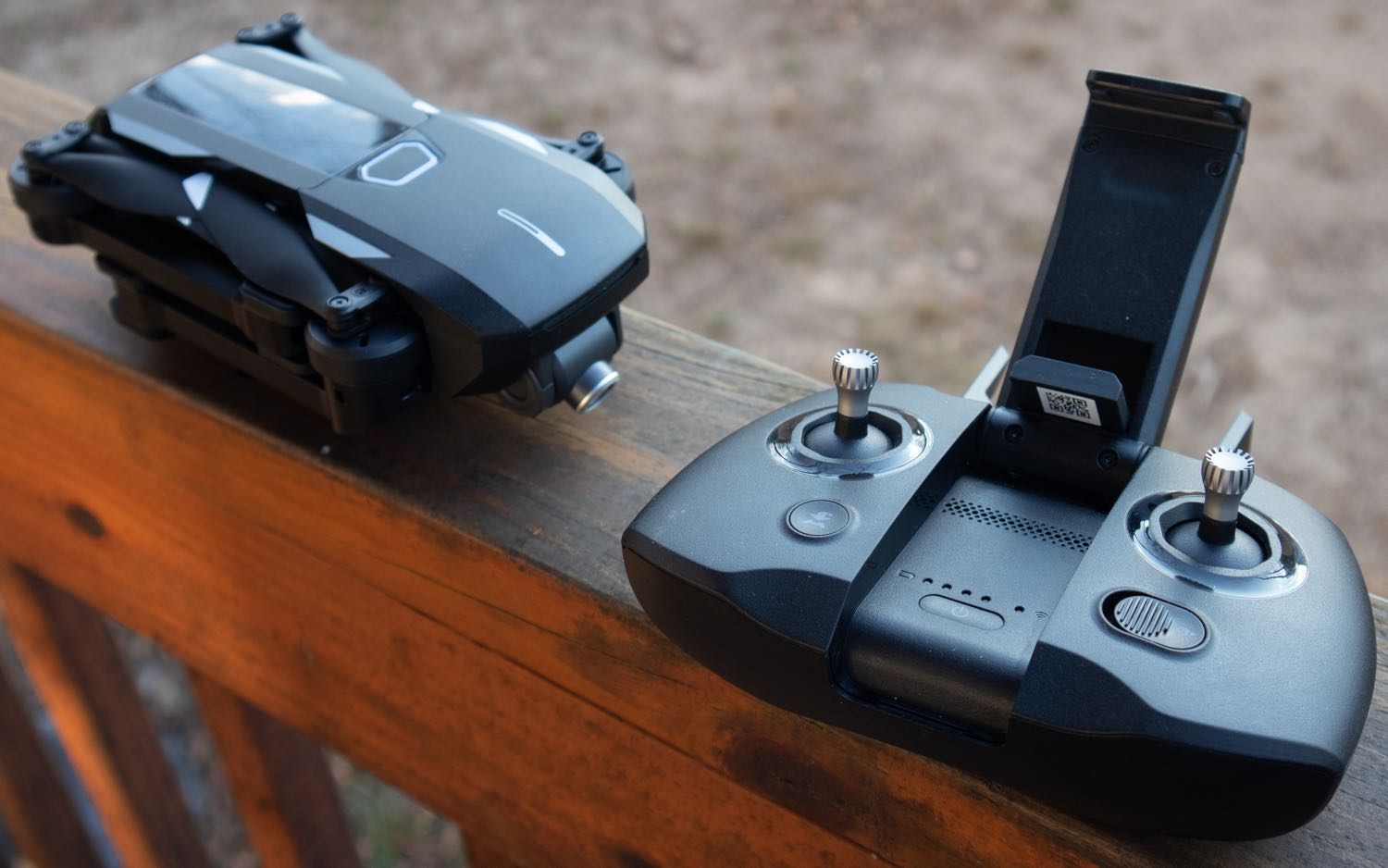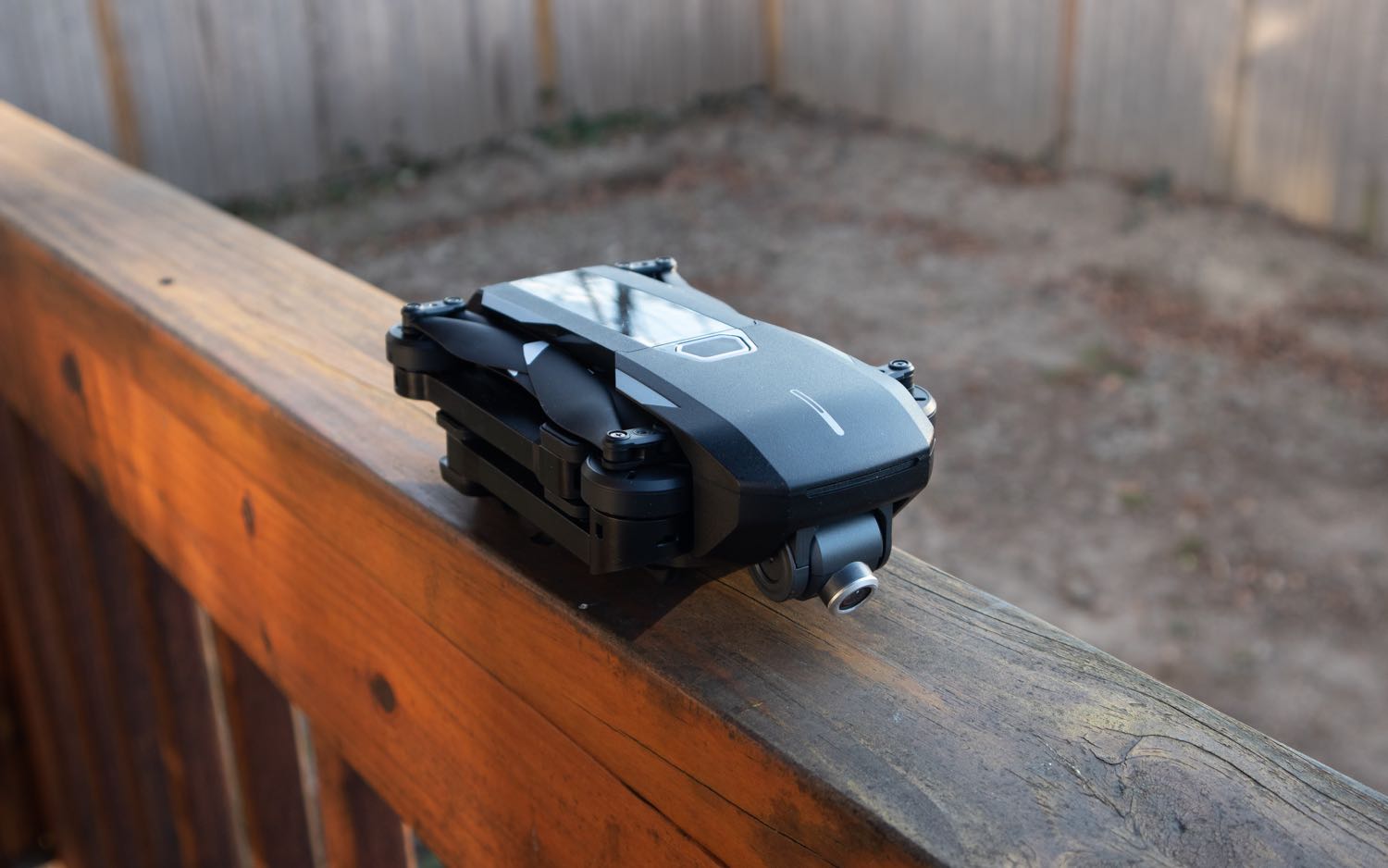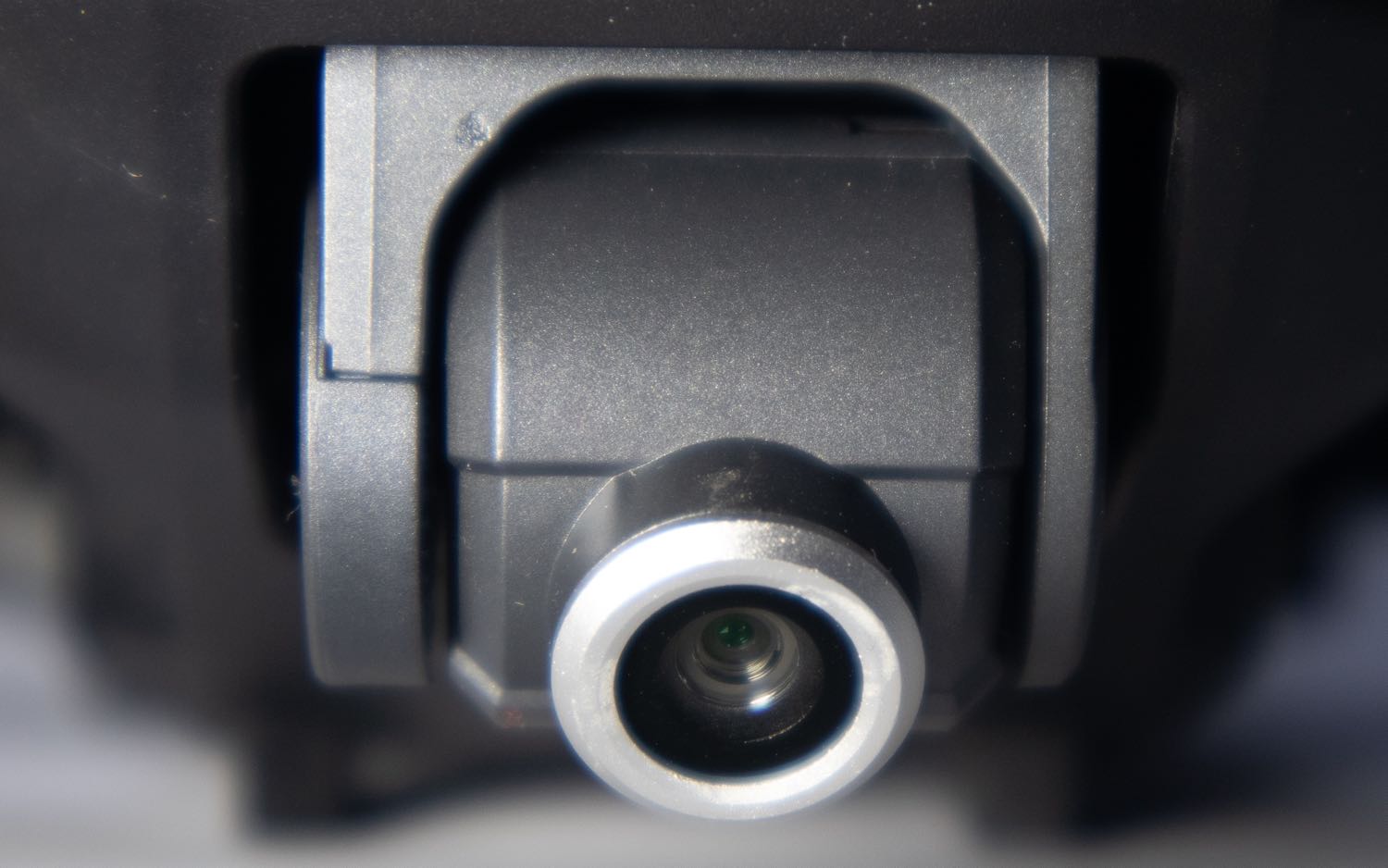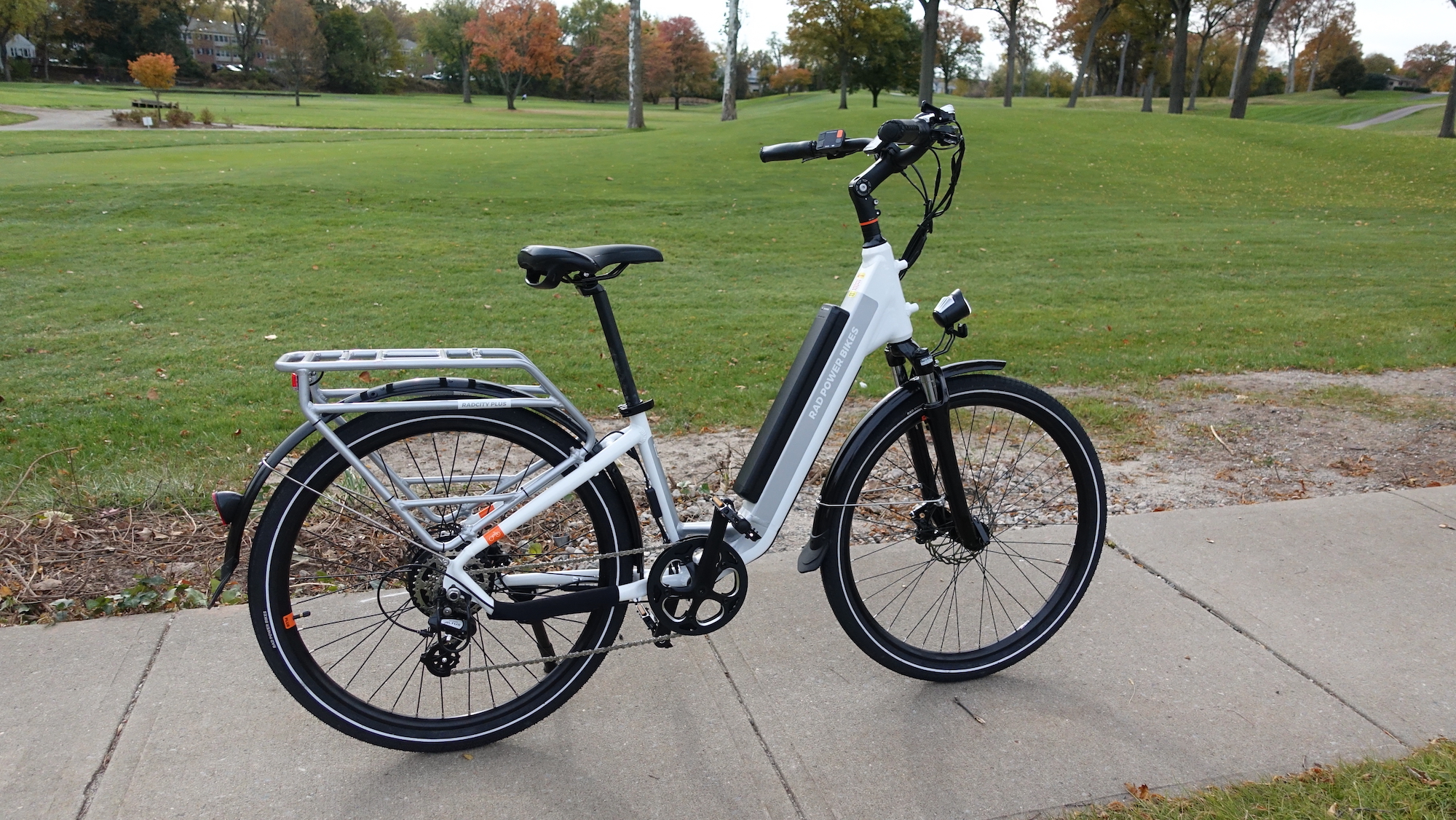Tom's Guide Verdict
The Mantis Q is a nimble, maneuverable drone, but the 4K video is shaky, and its voice-control feature is gimmicky.
Pros
- +
Fast and maneuverable
- +
Long battery life
Cons
- -
No 4K stabilized video
- -
Voice control is gimmicky
Why you can trust Tom's Guide
I've been yelling at gadgets for years, but it's only recently that they started listening to me. Technologies such as Amazon Alexa mean that you can now control your gadgets with your voice, and drones like the $449 Yuneec Mantis Q are getting in on this game. Unfortunately, voice control feels like a gimmick that doesn't add much to the experience.
Design
The Mantis Q is a sleek, futuristic-looking drone, with arms that fold against its body when not in use, forming a package about 6.2 x 3.7 x 2.2 inches. When you want to fly, you fold out the arms and lock them into place.
The remote control is a bit smaller than the drone and includes a neat, folding smartphone holder. Our iPhone XS slipped neatly into the holder during testing.

There are also two fold-out Wi-Fi antennas on the back of the controller, and a USB Type-C and USB Type-A port to connect the smartphone to the controller. A USB Type-A-to-USB Type-C cable is included for connecting to Android phones. iPhones will have to use the included Apple Lightning-to-USB cable.
Flight Performance
The Mantis Q is an easy drone to fly. Just unfold it, turn on the remote, connect it to the phone and then hit the takeoff button. The drone then takes off and hovers about 5 feet above the ground.
In the standard flight mode, the Mantis Q is very stable — perfect for beginners. A sports mode makes the drone much faster and more maneuverable. Yuneec claims the Mantis Q can go up to 44.7 mph, but we measured it at a somewhat slower (but still very fast) 33 mph.
In the standard flight mode, the Mantis Q is very stable — perfect for beginners.
The Mantis Q offers a variety of flight modes, including Journey (fly out and back toward you); POI (circle around a point of interest); and Visual Follow, which tracks a selected object with the camera, either keeping it at a fixed distance by moving the drone or tracking the object by keeping the drone still and moving the camera. The Visual Follow mode works well, as long as the object is distinctive enough to track.
Get instant access to breaking news, the hottest reviews, great deals and helpful tips.
MORE: Drone Buying Guide: Everything You Need to Know
It was able to track me without issues, for instance, but struggled with my dark-colored dog against a grass field. Because the Mantis Q lacks the collision detection capability and forward-looking cameras that drones like the Mavic Air use to avoid objects, if the tracked object happens to duck under cover, for instance, it will slam straight into a tree.
Voice Control
The voice-control feature of the Mantis Q is interesting, but it feels a little half baked. The idea is intriguing. When you are using the app and enable voice control, you can tell the drone to take off by saying, "Mantis Q, take off." To avoid accidents, you have to confirm this by saying "yes" when it asks.

When the drone is in flight, you can take a selfie by saying, "Take a selfie." It's neat, but the remote app sometimes doesn't detect voice commands — especially when the drone itself is flying nearby. And, you can't use your voice to control the position or attitude of the drone. So voice control feels more like a gimmick than a useful feature.
Sometimes, voice commands aren't detected, especially when the Mantis Q itself is flying nearby.
The same is true of the Smile feature, which tries to detect when you smile to take a photograph. It works, but I found that you have to smile broadly to trigger the feature, which makes you look rather like the Joker. That might be useful if you are Batman, but it doesn't work for the rest of us non-crimefighters.
Photo and Video Quality
The Mantis Q has a 4K camera, but when you enable the electronic image-stabilization feature, the camera resolution drops to 1920 x 1080 pixels (1080p) max. You do get 60-frame-per-second video, though.

The Mantis Q's electronic image-stabilization feature is also less effective than the stabilizing gimbal that drones like the Mavic Air 2 use. The video taken by these drones is at a higher resolution and is sharper and smoother. We also found that the stabilized video from the Mantis Q had an annoying habit of jumping.
When the drone was tilting to move left or right at speed, the stabilized video would stay level for a bit, then, as the stabilization shifted to reflect the orientation of the drone, it would suddenly shift to the tilted view in a quite disorientating way. In contrast, drones like the Mavic Air and Mavic Pro physically tilt the camera to adapt for the movement of the drone.
The Mantis Q has a 4K camera, but when you enable the electronic image-stabilization feature, the camera resolution drops to 1080p max.
Photos and video are stored on a microSD card that fits into a slot on the left side of the Mantis Q's body. A 16GB card is included with the drone.
Battery Life
Yuneec claims that the 3,000-mAh battery that clips into the back of the body of the Mantis Q has a battery life of 33 minutes, and that estimate isn't far off. We flew for about 25 minutes before the low-battery alarm started to sound, and still kept flying for a couple more minutes before the app warned us that the drone would automatically return to the starting spot soon. The Mantis Q comes with a single battery, but the included charger can hold three, charging each in turn. Spare batteries cost about $60.
Bottom Line
The Yuneec Mantis Q feels like something of a missed opportunity. It's a nice, easy-to-fly and fast drone that shoots pretty good 1080p video. That might have been enough a couple of years ago, but competing drones like the Mavic Air are shooting steadier and more attractive 4K video for only $200 more. The Mantis Q's voice-control feature is neat, but it just isn't useful. As a result, it's hard to recommend the Mantis Q over similarly priced drones that offer more polished features.
Credit: Tom's Guide
Richard Baguley has been working as a technology writer and journalist since 1993. As well as contributing to Tom's Guide, he writes for Cnet, T3, Wired and many other publications.

